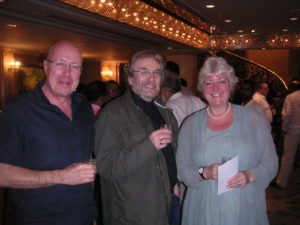POSTED ON two items
Things you discover by accident
Over the last few months we have been hearing a lot of talk in the UK industry about new initiatives in the South West of England to develop the sheepskin tanning industry, and I was astonished to discover on line thanks to Mr Google that a report had both been commissioned and published back in April 2007. It is forty nine pages long so too big to publish in full but you can download it at
http://www.realsheepskin.org.uk/downloads/Sheep_Industry_Report_M.pdf (2.3MB)
The Great Sheep industry and its Juicy Fifth Quarter
This is the excellent title it has been given and it reads like a document you would be proud of in any developing country. How much the industry has done for us in the past and could do in the future if all the skins were not exported unprocessed. It also takes quite a swipe at the industry in the 80s and the 90s when Strong and Fisher, Hillsdown Holdings and Pittards were fighting over supremacy. “Causing the downfall of the 2 former and has doggedly undermined the latter”. Since I was part of the management at Pittards I think this is very succinctly put. I do not believe any of the three companies did any serious strategic or financial planning to support their positions, and everything was done on the hunch and the opinions of the chief executives. Opportunism and the old problem of testosterone. True “command and control” stuff. “Feel the power and to hell with the employees” was the approach and of course as the report rightly states it led to the disorderly destruction of the industry and the unnecessary loss of a lot of good jobs.
For the future the report pushes forward a number of points largely based on ensuring that at least 500,000 pelts are kept in the UK for further processing and hopefully a new tannery being built near the M5 in Somerset. It notes the current issues in the small industry that exists being an elderly management profile with no succession and old plant and equipment, so that the sector is rapidly declining into a micro industry or craft sector. The options left are:
- Maintain the status quo. Sit tight
- Jump ship
- Diversification
- Integration, Merger, Amalgamation, Down Sizing
- Niche Marketing
Not an easy set of options. At the same time the industry itself is unsure about the value of the wool according to Scottish Agricultural College sheep specialist Dr John Vipond. Presenting his report on the sheep industry just last November he said the industry had to change quickly to survive, with one issue being to worry much less about the wool and concentrate on the meat, which was where the future market lies. “Most UK wool is sold for less than it costs to shear. The industry is losing £25-£40 million a year because of wool and it also contributes significantly to animal welfare problems with higher shepherding costs.”
Mike Redwood
7th February 2009POSTED ON
APLF will be full

If the APLF in Hong Kong has a really big attendance they can thank the Indian International Leather Fair in Chennai and the great meetings with alumni and friends to remind them of what is going on in Hong Kong for the Leather Centenary.
Despite the depression it looks like the show and the Corium event will be very busy. One function of trade fairs today, more than selling, is as a meeting place where one can catch a feeling from trends and pricing, do some informal benchmarking, and meet a lot of colleagues that it would be impossible to get together with face to face otherwise. For all the power of the blackberry it can only be a supplement to face to face meetings, never a replacement.
Chennai can now say it has arrived as a major presence as there is no doubt that India has one of the best vertically integrated leather industries in the world and its price points and products, heavy in footwear and with a strong formal capability, seem better placed than most to withstand the worst of the recession.
The horror story of the moment is the upholstery sector. If you owned a clutch of world class, top level tanneries around the world at a time when your regular hides were dirt cheap because your market had gone on forced holiday what would you do? Footwear? Enough said and that could be disruptive factor to shake the boat: watch this space.
My picture is of Dr and Mrs Wilkinson plus Richard Daniels (centre), alumnus and reed bed guru.
3rd February 2009